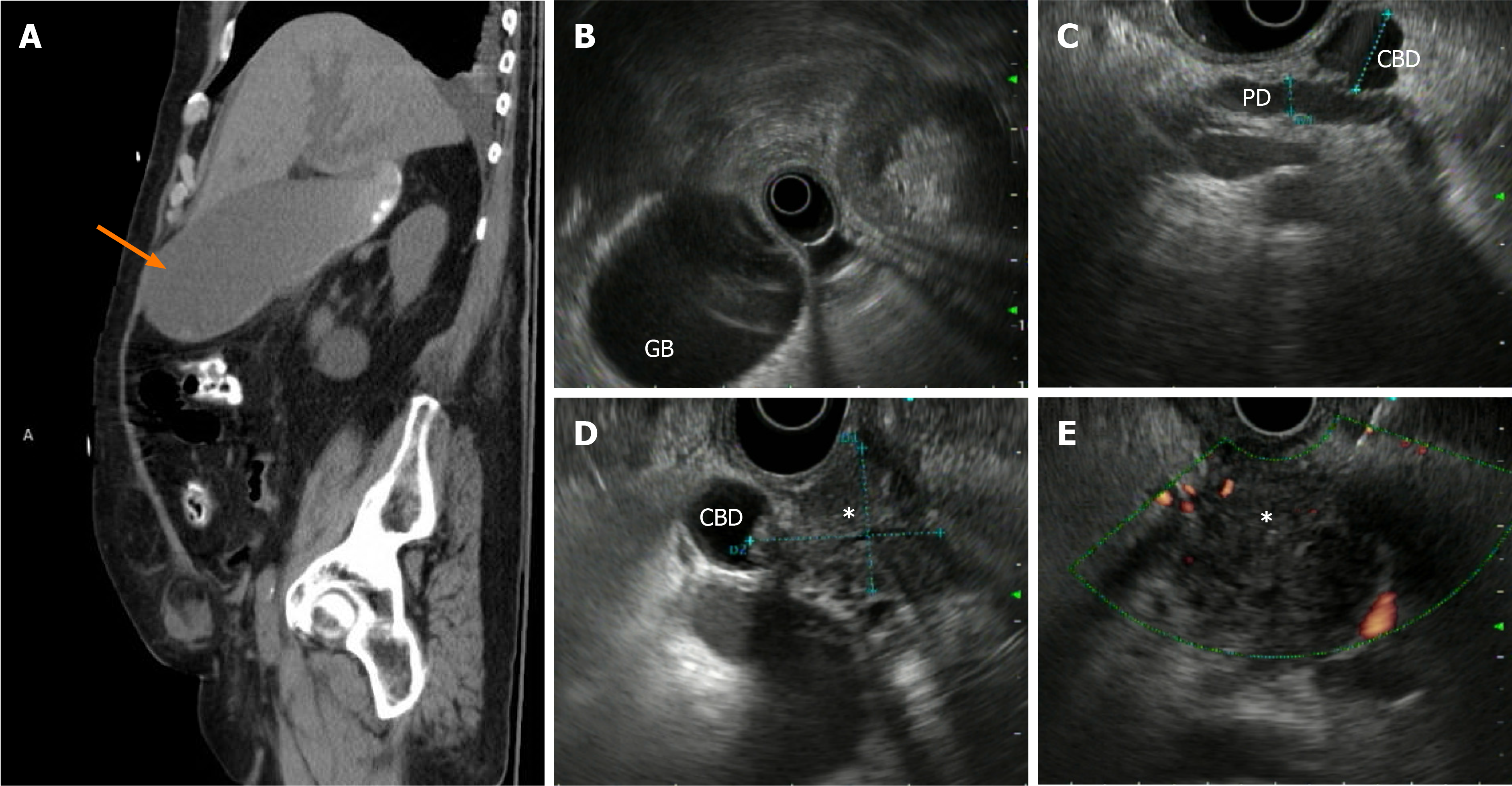Copyright
©The Author(s) 2020.
World J Hepatol. Jun 27, 2020; 12(6): 262-276
Published online Jun 27, 2020. doi: 10.4254/wjh.v12.i6.262
Published online Jun 27, 2020. doi: 10.4254/wjh.v12.i6.262
Figure 1 Endoscopic ultrasound in the diagnosis of obstructive jaundice.
An 80-year-old male with a history of non-alcoholic fatty liver disease presented with new onset of painless jaundice, physical examination consistent with Courvoisier’s sign (palpable gallbladder), and laboratory test results suggestive of severe biliary obstruction. A: Distended gallbladder (arrow) seen on computed tomography, sagittal view. B: Distended gallbladder seen on endoscopic ultrasound. C: Double duct sign consisting of a dilated common bile duct (CBD) and dilated pancreatic duct. D: A poorly-marginated, hypoechoic pancreatic mass (asterisk) invading the distal CBD. E: Fine-needle biopsy of the pancreatic mass (asterisk), which led to tissue diagnosis of adenocarcinoma and facilitated subsequent management. GB: Gallbladder; PD: Pancreatic duct; CBD: Common bile duct.
- Citation: Fung BM, Abadir AP, Eskandari A, Levy MJ, Tabibian JH. Endoscopic ultrasound in chronic liver disease. World J Hepatol 2020; 12(6): 262-276
- URL: https://www.wjgnet.com/1948-5182/full/v12/i6/262.htm
- DOI: https://dx.doi.org/10.4254/wjh.v12.i6.262









